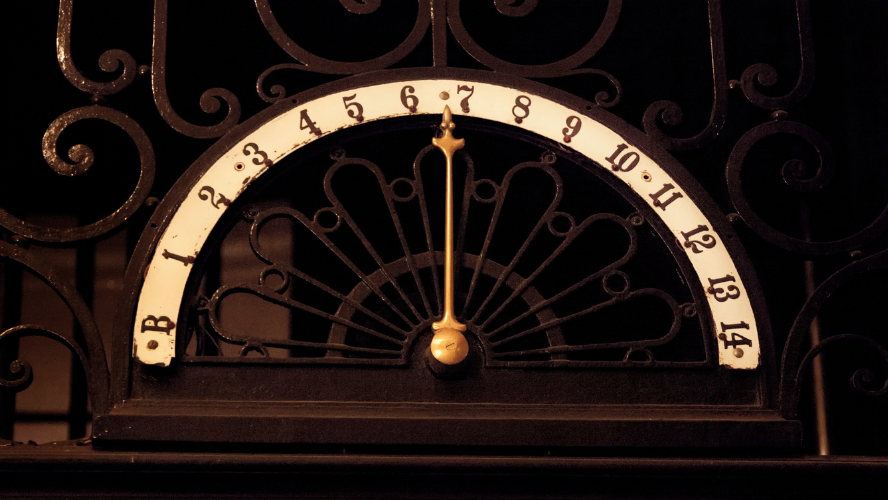The origins of the office stretch back further than you might expect. The Uffizi Gallery in Florence, commissioned in the 16th century by the Grand Duke of Tuscany, is widely regarded as the first modern administrative building. Its name in Italian, “Uffizi”, loosely translates as “offices” – giving rise to the term we still use today.
The first purpose-built offices emerge
It wasn’t until the 1700s that the first purpose-built corporate office appeared. Its emergence was driven by the needs of new commercial enterprises that required centralised head offices to make decisions about trading operations all over the world.
The Bank of England, which moved to its purpose-built office on Threadneedle Street in London in 1734, is one of the earliest examples of a corporate headquarters designed specifically for business administration.
Situated in the heart of London’s financial district, the building signalled the growing importance of centralised financial management and reflected the status of the Bank as a key economic institution. This office was more than an administrative hub – it was a strategic asset that reflected the Bank’s purpose and helped shape its reputation.
Industrial Revolutions transform work – and workplaces
Between roughly 1778 and 1870, the First and Second Industrial Revolutions transformed the world at an unprecedented pace. During this period, work and workplaces changed dramatically, as businesses grew in size and complexity.
Offices – including the original Savills headquarters on Rood Street in London – were quick adopters of electric lighting, which extended the working day. The typewriter, telegraph and later the telephone also revolutionised how businesses operated, how people communicated and how work was organised.
Skyscrapers on the skyline: a symbol of commerce and modernity
Throughout the first half of the 19th century, a new, optimistic age of modern commerce and capitalism took shape. Perhaps the most enduring symbol of corporate confidence is the skyscraper, which is still associated with prestige and modernity today.
Chicago’s Home Insurance Building, which was completed in 1885, was the world’s first skyscraper. Its bold and novel steel-framed design set the stage for the iconic transformation of the New York skyline that followed in the 1890s-1910s.
Office designs prioritise people and the human experience
As the 20th century unfolded, major global events – most notably the two world wars – transformed societies and cultural attitudes. As businesses navigated the interwar and post-war periods, office designs became increasingly people-centric, balancing emerging business management theories with an emphasis on human experience.
In 1950s Germany, a new office design philosophy emerged that rejected traditional hierarchical layouts. Known as “Bürolandschaft” or “office landscaping”, it instead promoted a more open and egalitarian workspace that fostered collaboration. This movement played a key role in shaping the open-plan office designs we know today.
In 1964, the American inventor Robert Propst invented the “Action Office”. This was designed to provide a private workspace for individuals that supported physical health with adjustable desks, comfortable seating and equipment that allowed for better movement and posture.
The Action Office became one of the most influential office furniture systems of the 20th century. Propst is also credited with inadvertently inventing the office cubicle, which became popular in the 1970s and was based on his original design concept.
The Digital Revolution boosts productivity and remote working
From the 1980s to the early 2000s, technology advanced faster than ever before – and was rapidly adopted by businesses. The Third Industrial Revolution – also known as the Digital Revolution – ushered in an era of electronics, information technology and the internet, driving knowledge-based industries and globalisation. Personal computers, laptops, mobile phones and email allowed workers to stay connected everywhere, all the time, significantly speeding up communication and increasing productivity.
These technologies also enabled more effective remote working – an idea first put forward by NASA scientist Jack Nilles in 1973, when he suggested “telecommuting” as a response to that year’s oil crisis.
“Hot-desking” also became more popular as office workers were provided with individual laptops and mobile phones. (The term originates from the naval practice of “hot-bunking”, where multiple sailors shared the same bunk in shifts to maximise limited sleeping space on a vessel.)
Offices adapt to climate change
This period was also shaped by growing public awareness of global warming. In 1997 the Kyoto Protocol was the first legally binding international agreement aimed at addressing climate change.
In 2015, the Paris Agreement was signed, with the primary goal of limiting global temperature rises to below 1.5°C above pre-industrial levels. In response, office developers, landlords and tenants committed to reducing the environmental impact of office buildings, increasingly adopting environmental building certifications.
A story of continual evolution
Today’s offices continue to change in response to the demands of occupiers – and the people who work for them. As well as sustainability, there’s an increasing emphasis on buildings that support wellbeing. And the growing prevalence of hybrid working models means tenants are looking for workspaces that can facilitate collaboration, innovation and mentoring.
The history of the office is a story of adaptation – shaped by shifting occupier needs, disruptive events, technological advances and evolving social and economic priorities. The most successful offices have always been those that embraced change. And as the world continues to evolve, so too will the office, reflecting both the megatrends and values of each era.



